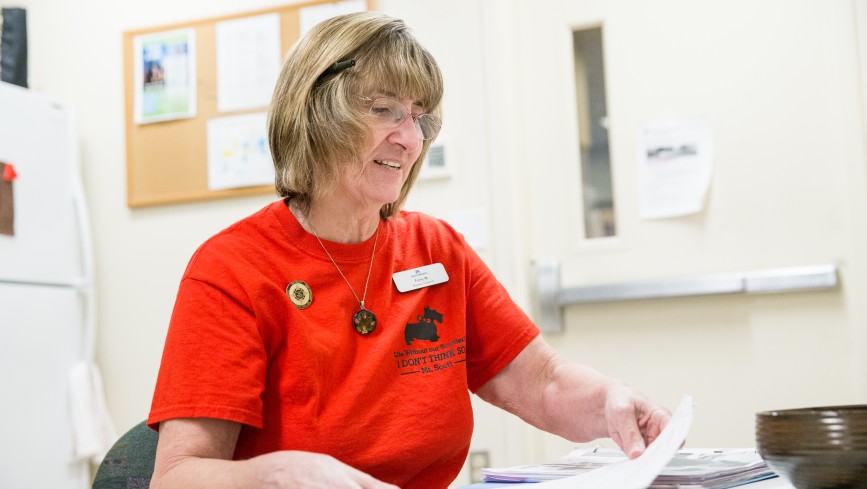Hank Spring 2016
See the whole issueFrom Tears to Cheers

Regaining control: Shannon Cazinha (left), UBT development consultant, worked with management co-lead Linh Chau (center) and union co-lead Fairy Mills (right) to help their Northwest pharmacy team make improvements that gave members more control over their work.
Pharmacy UBT pulls through with good communication and widespread involvement
Fairy Mills, a pharmacy technician and member of UFCW Local 555, has worked for Kaiser Permanente for 29 years. Not long ago, however, there were days she left the Mt. Scott Pharmacy ready to cry, exhausted. Wait times were up and service scores had plummeted. She thought about retiring but decided to tough it out—and was voted in as the union co-lead for the department’s unit-based team.
About the same time, Linh Chau arrived as the new supervisor. He wasn’t sure what he’d stepped into. “It was the perfect storm,” he says. “The team was stressed out, members were unhappy, membership was up, and in the midst of it all, we were implementing a new software system.”
Pharmacies in the Northwest region were in a tough spot a year or so ago—and that was especially true for the Mt. Scott Pharmacy. Part of the Sunnyside campus, it’s the second busiest pharmacy in the region, seeing an average of 500 patients a day and filling nearly 1,000 prescriptions.
Although other regions had already made the transition to ePIMS, a software system that syncs up with KP HealthConnect®, the migration process hadn’t been easy.
“We had to reenergize the team,” Chau says.
Chau and Mills’ first strategy was to give staff members confidence that things would improve. The two co-leads began rounding, checking in with UBT members regularly and making sure everyone had a chance to offer suggestions for improvement— giving them the power to shape how things are done, one of the key elements for beating back burnout.

Sharing information
The co-leads also shared what they were learning, Mills says, “so that everyone had a clear understanding of what our gaps were.”
With the help of the team’s UBT development consultant, Shannon Cazinha, the team began a comeback. Morale climbed as staff members worked together to reorganize schedules and used performance improvement tools like 6S (sort, straighten, shine, standardize, safety and sustain) to improve the department’s workflow.
“Linh relied on Fairy’s KP experience and Fairy relied on Linh’s management experience. Together, they brought the team together,” Cazinha says. “Engaging activities and one-to-one conversations got to the root of the team’s problems.”
The co-leads also worked to make UBT meetings a venue for learning, brainstorming—and fun. If you drop in on one today, you might find members building camaraderie by playing games like Minute to Win It. The team also takes time to recognize members who are doing a great job.
“When we started having meetings, we had just a handful of people show up,” Mills says. “Now everyone comes.”
Several metrics indicate how much has changed. The use of sick time dropped from an average of 32.2 hours per full-time employee per pay period in 2014 to just four hours per pay period in 2015; the team’s People Pulse Work Unit Index soared from 37 percent to 89 percent. Wait times have improved, and member satisfaction scores nearly doubled from 2014 to 2015.
The team’s experience tracks with what workplace stress experts note: Stress and burnout dwindle when people work together as a team. “Working with our team is different now,” Mills says. “We have fun, we enjoy serving our patients, and we’re improving our performance.”
fewer hours of sick time used per FTE per pay period
